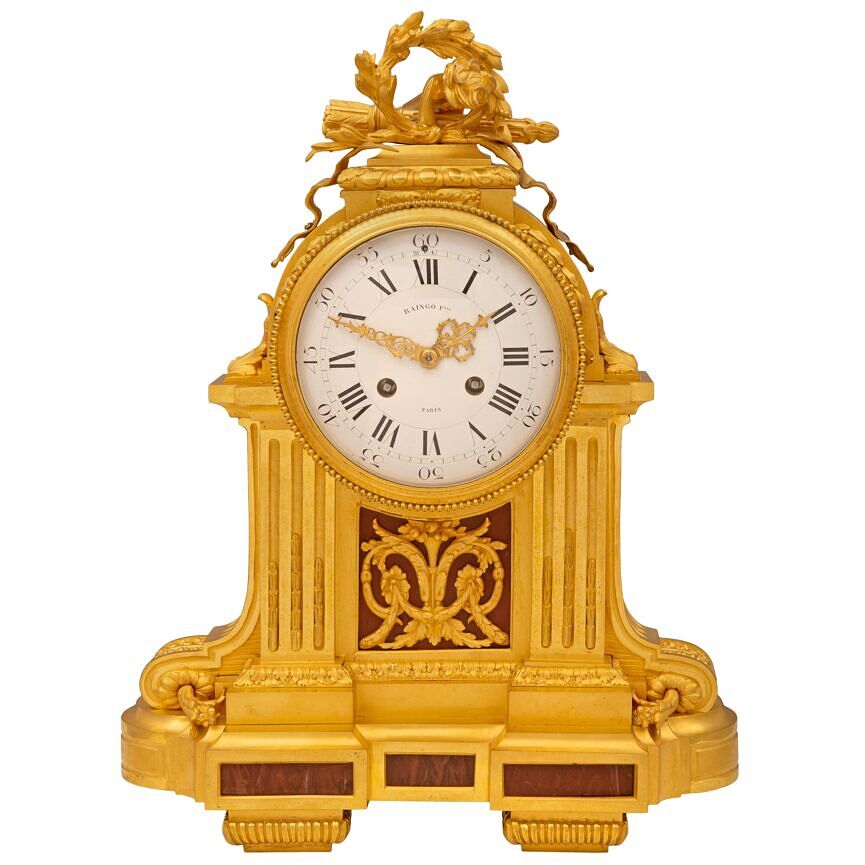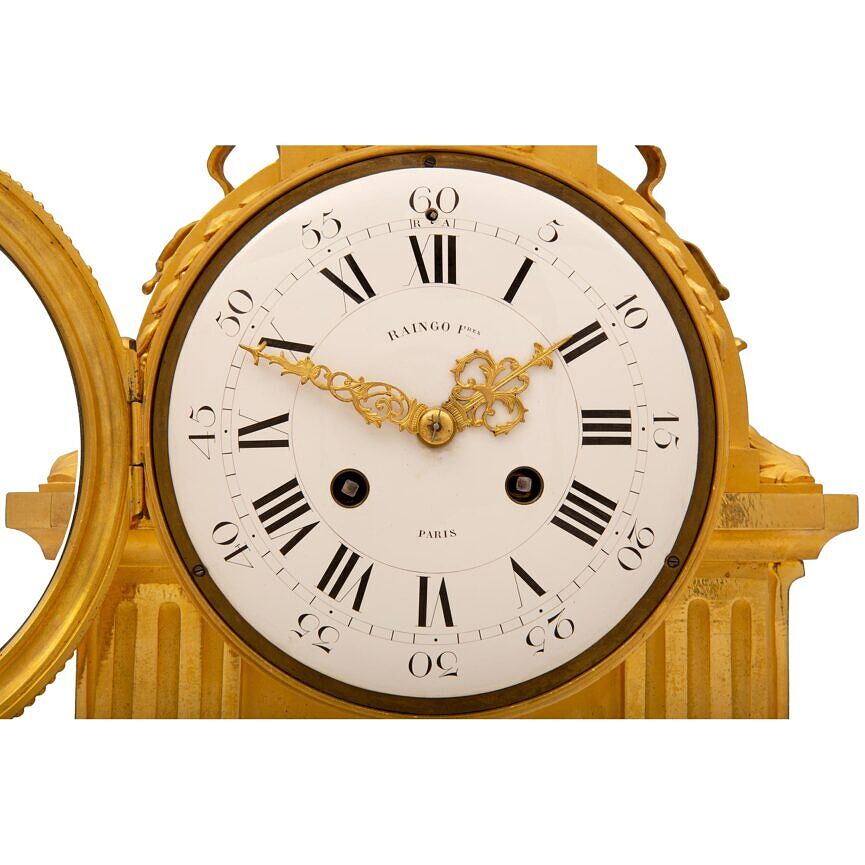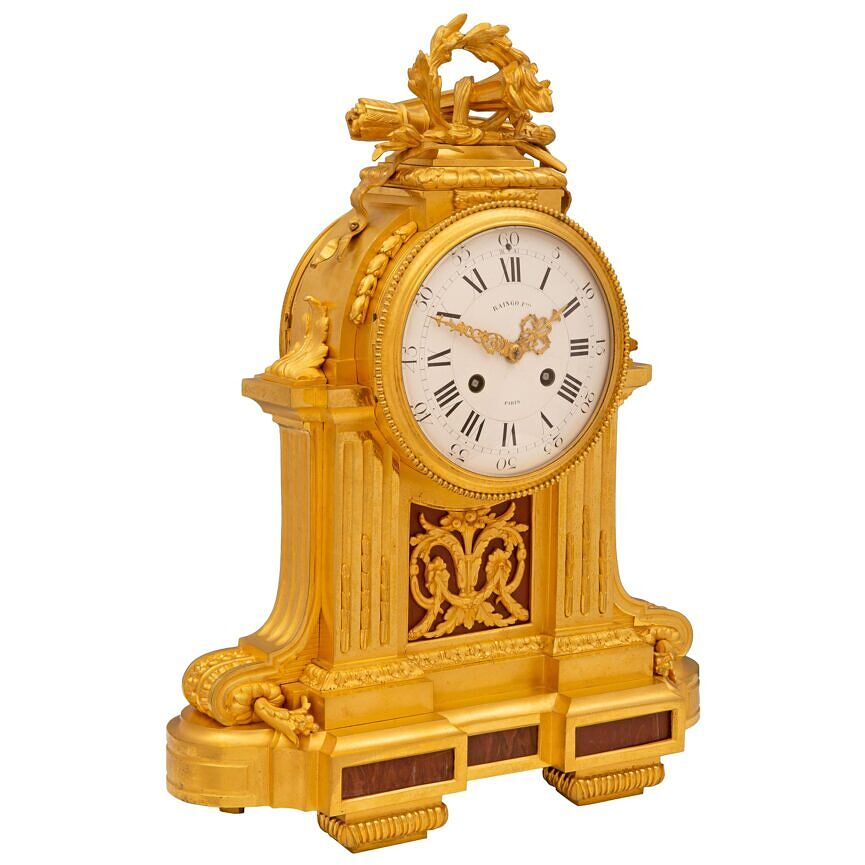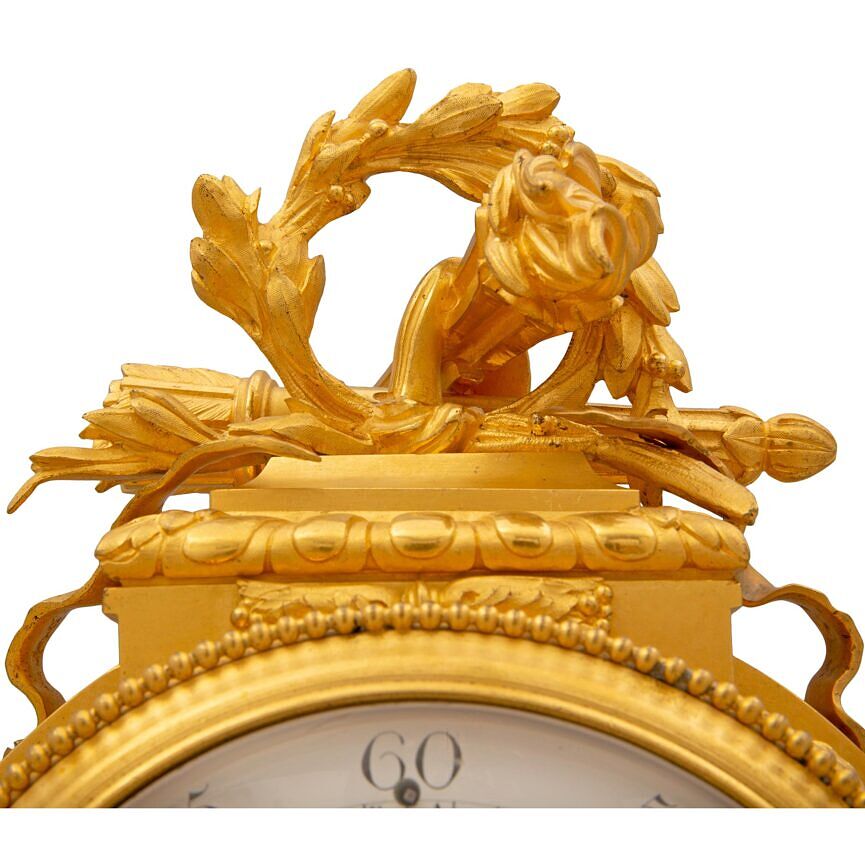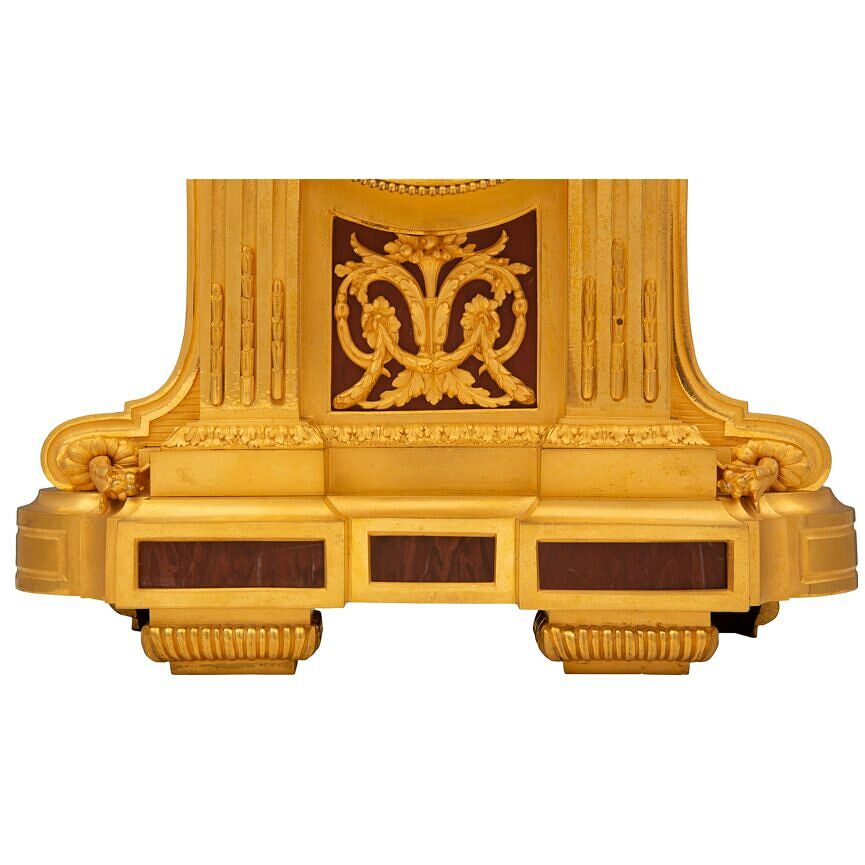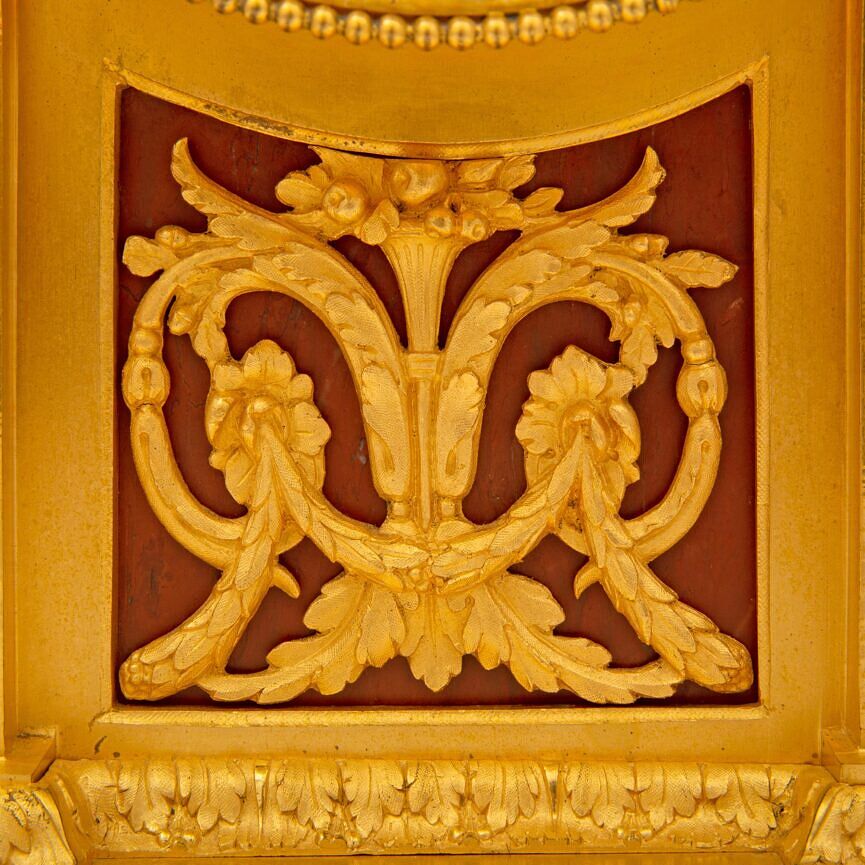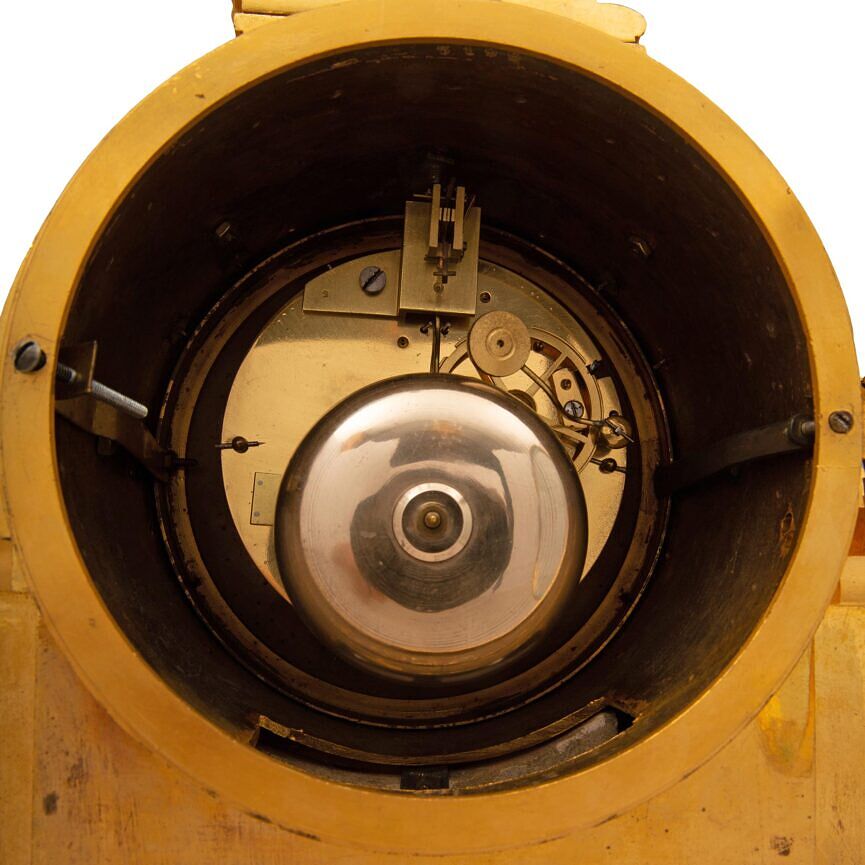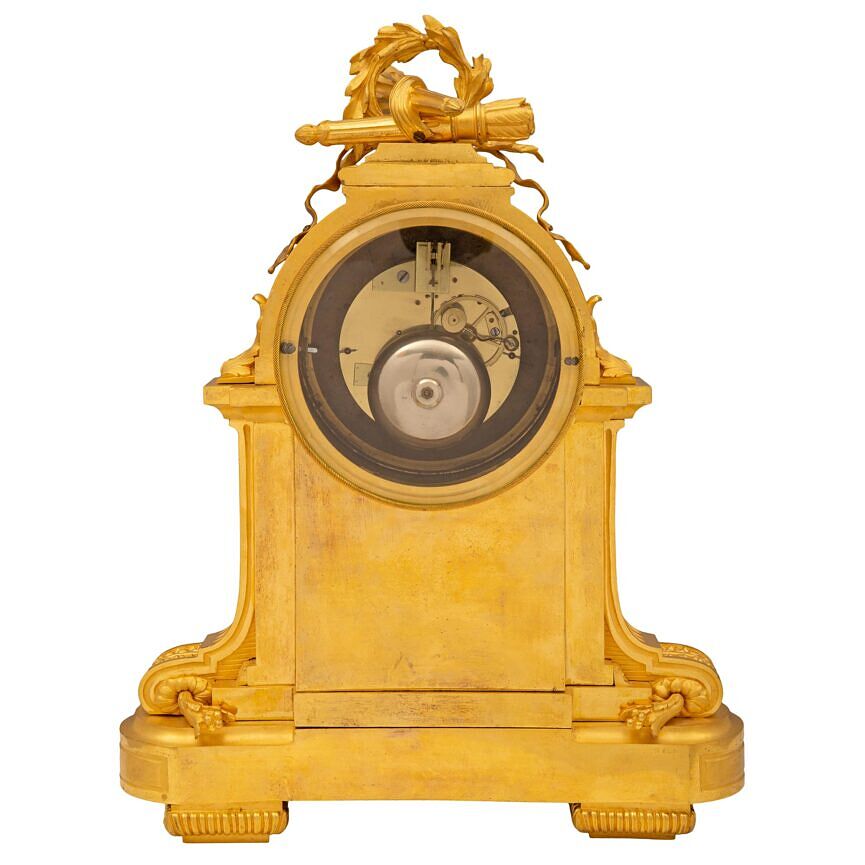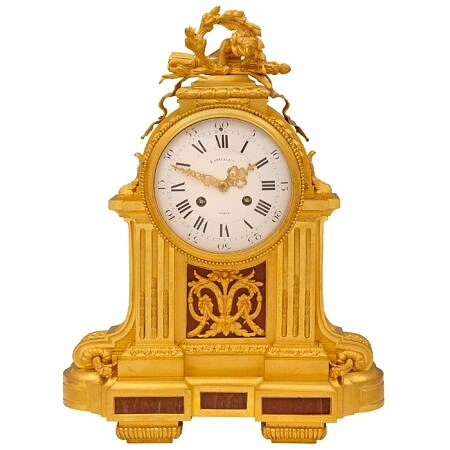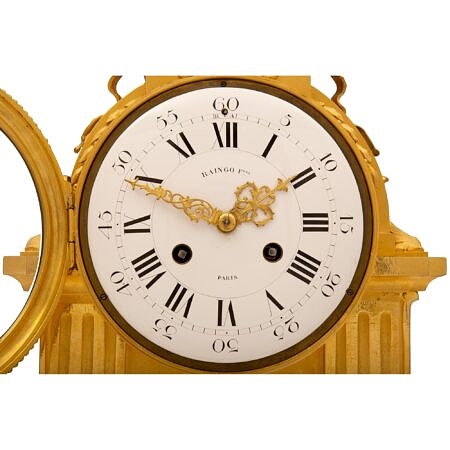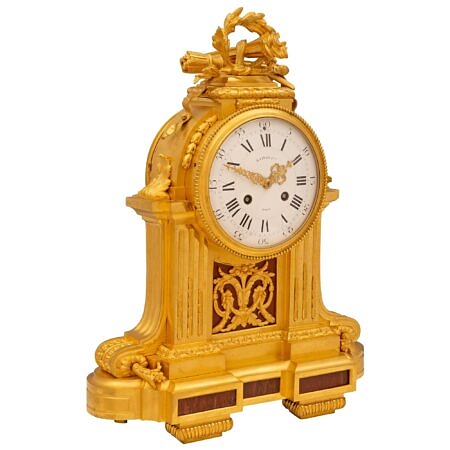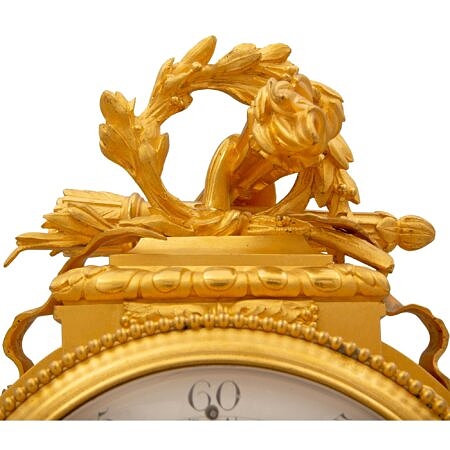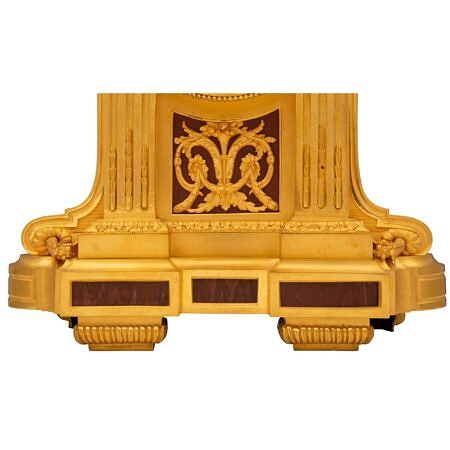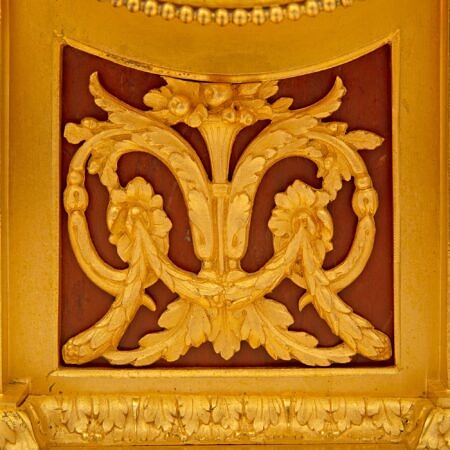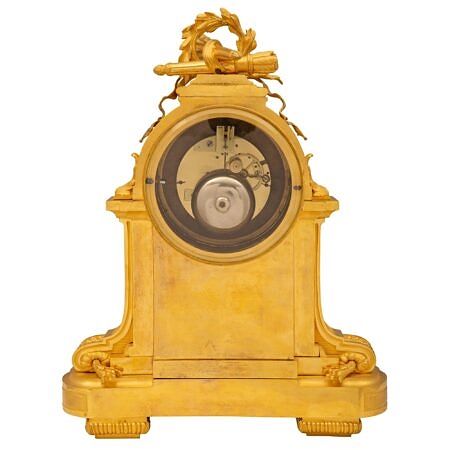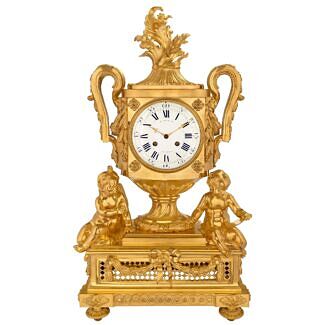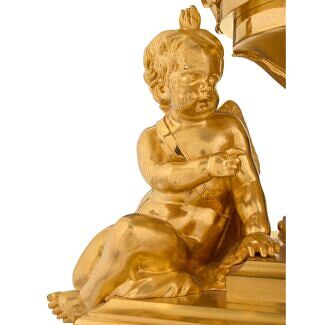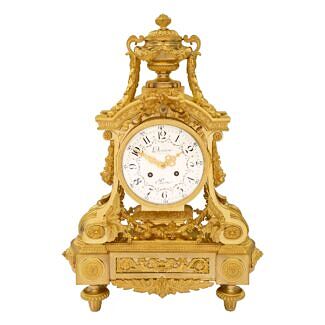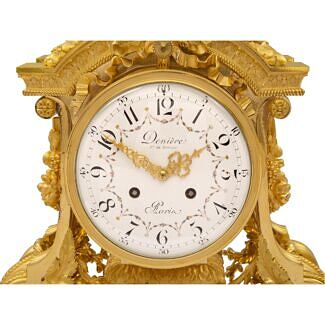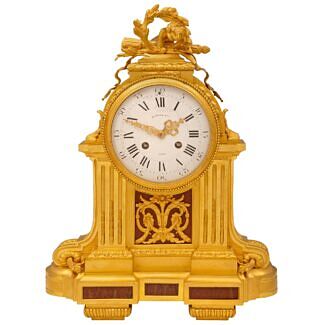A French 19th century Louis XVI st. Belle Époque period ormolu and Griotte de Campan Rouge marble clock, signed Raingo Freres, Paris
A stunning and extremely high quality French 19th century Louis XVI st. Belle Époque period ormolu and Griotte de Campan Rouge marble clock, signed Raingo Freres, Paris. The clock is raised by elegant reeded block feet below most decorative fitted... — Read More
A stunning and extremely high quality French 19th century Louis XVI st. Belle Époque period ormolu and Griotte de Campan Rouge marble clock, signed Raingo Freres, Paris. The clock is raised by elegant reeded block feet below most decorative fitted recessed marble inserts and rounded corners. Elegant scrolled designs lead up each side, centering the impressive fluted body with a striking pierced richly chased Rinceau shaped foliate reserve set on a beautiful Griotte de Campan Rouge marble background. The white enameled clock face displays Roman and Arabic numerals, and pierced foliate ormolu hands all framed within a fine ormolu beaded border. Above is a stunning richly chased berried laurel wreath amidst the eternal flame and quiver tied together with a charming ribbon and displaying an exceptional satin and burnished finish. All original gilt throughout. — Read Less
- Item # 4452
-
H: 19.75 in L: 15 in D: 6 in
H: 50 cm L: 38 cm D: 15 cm
- France
- 19th Century
- Marble/Stone, Ormolu
-
Belle Époque Period Read More,
Louis XVI st. Read More
(Belle Époque Period) -
Gaining its name from the optimistic and peaceful period of time between 1871 and World War I, Belle Epoque means “beautiful period”, and occurred during the era of the Third French Republic. This period of economic, colonial, and scientific prosperity brought with it a flourishing artistic climate with numerous literal, musical, theatrical, and visual masterpieces being created.
The Eiffel Tower, which was constructed between 1887 and 1889, served as the entrance to the World’s Fair held in Paris. That same year, the Moulin Rouge cabaret in Paris was founded and showcased the now more mainstream styles of performance including can-can dancing. Belle Epoque dancers and singers were Paris celebrities and became immortalized by the poster arts of Toulouse-Lautrec.
Leading up to this period in 1865, the American Civil War was coming to a close, with France proposing to construct the Statue of Liberty as a joint effort with the United States. France would be responsible for the statue, with America constructing the pedestal. Created to celebrate the nation’s success in building a viable democracy, the statue would stand as a symbol of friendship between the French and American people.
(Louis XVI st.) -
Also known as Louis Seize, Louis XVI's style is a style of architecture, furniture, decoration, and art created during Louis XVI’s 19-year reign in France, just before the French Revolution.
Thought to be a reaction and juxtaposition to the prior more elaborate styles, Louis XVI style developed at the end of the Baroque Period and continued until the birth of French Neoclassicism.
King Louis XVI showed little enthusiasm for the old world styles of the Baroque Period and he sought out a create a new “beau ideal” that focused on the purity and grandeur of Ancient Romans and Greeks.
Inspired by Ancient Roman architecture and art, distinct features of the Louis XVI style are linear lines, small repeated motifs, floral medallions hanging from ribbons, acanthus leaves, urns, dolphins, ram, and lion heads, and griffins.
Greco-Roman elements, often used in earlier and later French styles, were also quick common and included fluted and twisted columns, Caryathids, and corbels.
- Zacharie Joseph Raingo Read More
Zacharie Joseph Raingo (1775- 1839), Son of watchmaker Nicolas Raingo, was a renowned clockmaker and bronzier, and founded Raingo Frères in 1813 Paris, with his three brothers.
Raingo Frères was named the "Horloger-Mécanicien" by the Duke of Orleans and "Horloger -Mécanicien du Garde-Meuble de la Couronne" (Supplier of the King of France) in 1824. King George IV of England was also a collector.
Known for the quality of their ormolu, Raingo Frères had furnished bronzes and garniture for Emperor Napoleon III and the Empress Eugenia, examples of which are now in the collection of The Louvre.
Raingo Frères exhibited at the World's Fairs in Paris from 1884 to 1889, and won prizes at all of them, including a gold medal in 1889. In 1862 they also exhibited at the Universal Exhibition in London.
Raingo Fréres, established in 1813 in Paris, specialized in the high precision clock making during the Empire and the Restoration period. Raingo is associated with many exquisite models of clocks and many of these designs were patented. They frequently worked in partnership with very prestigious cabinetmakers in particular François Linke.
Payment Plan Option Learn More Choose the payment plan option at checkout and customize this payment option with our team. Payment plans are flexible and items will ship once all payments are received.


